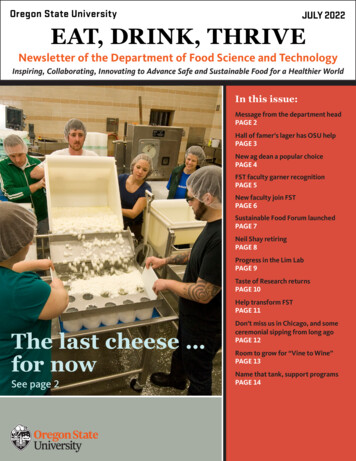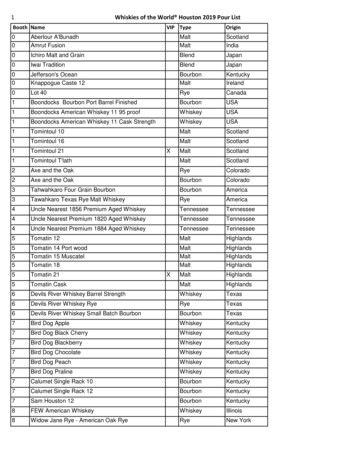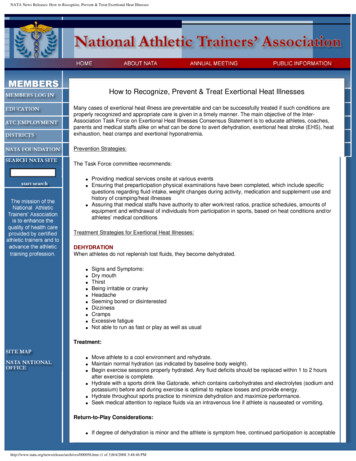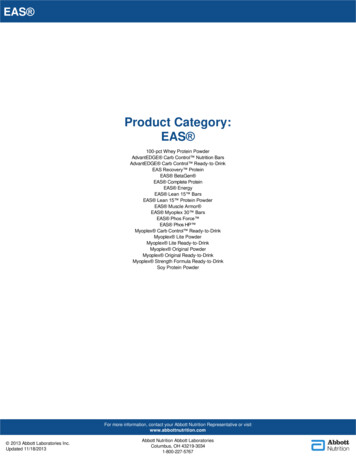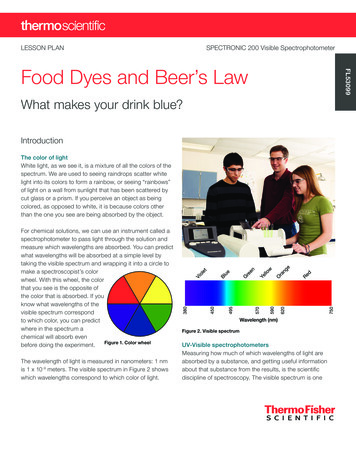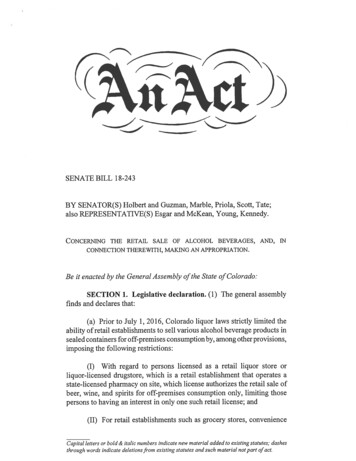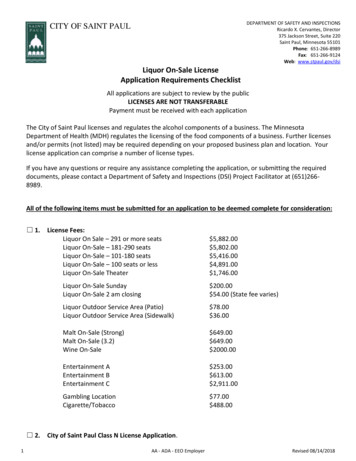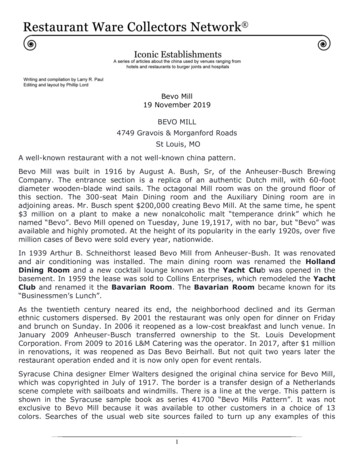
Transcription
Bevo Mill19 November 2019BEVO MILL4749 Gravois & Morganford RoadsSt Louis, MOA well-known restaurant with a not well-known china pattern.Bevo Mill was built in 1916 by August A. Bush, Sr, of the Anheuser-Busch BrewingCompany. The entrance section is a replica of an authentic Dutch mill, with 60-footdiameter wooden-blade wind sails. The octagonal Mill room was on the ground floor ofthis section. The 300-seat Main Dining room and the Auxiliary Dining room are inadjoining areas. Mr. Busch spent 200,000 creating Bevo Mill. At the same time, he spent 3 million on a plant to make a new nonalcoholic malt “temperance drink” which henamed “Bevo”. Bevo Mill opened on Tuesday, June 19,1917, with no bar, but “Bevo” wasavailable and highly promoted. At the height of its popularity in the early 1920s, over fivemillion cases of Bevo were sold every year, nationwide.In 1939 Arthur B. Schneithorst leased Bevo Mill from Anheuser-Bush. It was renovatedand air conditioning was installed. The main dining room was renamed the HollandDining Room and a new cocktail lounge known as the Yacht Club was opened in thebasement. In 1959 the lease was sold to Collins Enterprises, which remodeled the YachtClub and renamed it the Bavarian Room. The Bavarian Room became known for its“Businessmen’s Lunch”.As the twentieth century neared its end, the neighborhood declined and its Germanethnic customers dispersed. By 2001 the restaurant was only open for dinner on Fridayand brunch on Sunday. In 2006 it reopened as a low-cost breakfast and lunch venue. InJanuary 2009 Anheuser-Busch transferred ownership to the St. Louis DevelopmentCorporation. From 2009 to 2016 L&M Catering was the operator. In 2017, after 1 millionin renovations, it was reopened as Das Bevo Beirhall. But not quit two years later therestaurant operation ended and it is now only open for event rentals.Syracuse China designer Elmer Walters designed the original china service for Bevo Mill,which was copyrighted in July of 1917. The border is a transfer design of a Netherlandsscene complete with sailboats and windmills. There is a line at the verge. This pattern isshown in the Syracuse sample book as series 41700 “Bevo Mills Pattern”. It was notexclusive to Bevo Mill because it was available to other customers in a choice of 13colors. Searches of the usual web site sources failed to turn up any examples of this1
pattern, so I have no clue which color was used by Bevo Mill. It must not have beenmarked for Bevo Mill. Maybe one of you have a piece of this reclusive pattern?There is a service plate with the logo that was used during more recent ownership.Information sources: Thomas Kempland Collection of photographs by J. R. EikePhotography, St. Louis, MO, 1914-1917, Lost Tables, website, St. Louis Post-Dispatch,Feb 9, 2019, article by Lan Froeb, eBay, AOL image search, Google image search.WorthPoint.1917 - opening day advertisement2
Main Dining Room in 1917Another view of Main Dining Room3
Auxiliary Dining Room, 1917Octagonal Dining Room with tile murals4
Bevo malt drink advertisement5
Exterior in 19406
Holland Room in 1940Renovated Main Dining Room with china on tables7
Renovated Main Dining Room with china on tablesBavarian Room in basement, originally the Yacht Club8
More recent view of exteriorBevo Mill pattern in Syracuse salesman’s sample book9
Service plate from more recent ownership10
Bevo Mill was built in 1916 by August A. Bush, Sr, of the Anheuser-Busch Brewing Company. The entrance section is a replica of an authentic Dutch mill, with 60-foot diameter wooden-blade wind sails. The octagonal Mill room was on the ground floor of this section. The 300-seat Main Dining room and the Auxiliary Dining room are in .
